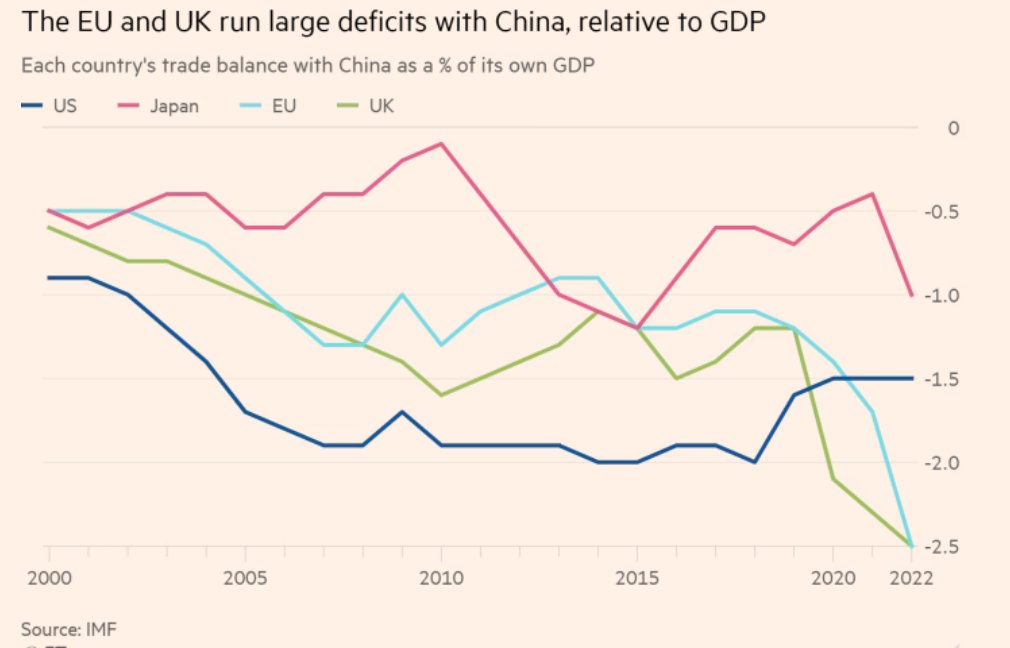Think it is progress of sorts when a New York Times feature on "China by the numbers" doesn't mention Chinese holdings of Treasuries but does mention China's belt and road lending ...
1/x
nytimes.com/2023/07/07/bus…
1/x
nytimes.com/2023/07/07/bus…
China's holdings of US Treasuries did increase sharply from 2002 to 2010, reaching about 10% of US GDP (and far higher share of China's GDP). But they are now only about 5% of US GDP.
(China also holds a lot of Agencies for the record)
2/
(China also holds a lot of Agencies for the record)
2/

As a share of the "available for sale" Treasury market, China's holdings rose to almost 20% of the market, but are now down to just over 5% ...
3/
3/

That's because China's holdings of Treasuries have essentially been flat (slightly declining recently even with the adjustment for Euroclear custodied Treasuries thanks to a shift to Agencies) while the stock of Treasuries increased massively ...
4/
4/

And it is because China made a policy decision back in 2010 that it had plenty of reserves (and plenty of Treasuries) and started to consciously move fx into the hands of the policy banks and investment funds to support what became the Belt and Road.
5/
5/

I tell this story, with plenty of institutional details, in an article that I recently did for the China Project.
The net result: it took 10ys, but China now has more credit exposure to the belt and road than the US Treasury!
6/6
thechinaproject.com/2023/06/29/sha…
The net result: it took 10ys, but China now has more credit exposure to the belt and road than the US Treasury!
6/6
thechinaproject.com/2023/06/29/sha…
• • •
Missing some Tweet in this thread? You can try to
force a refresh

 Read on Twitter
Read on Twitter












